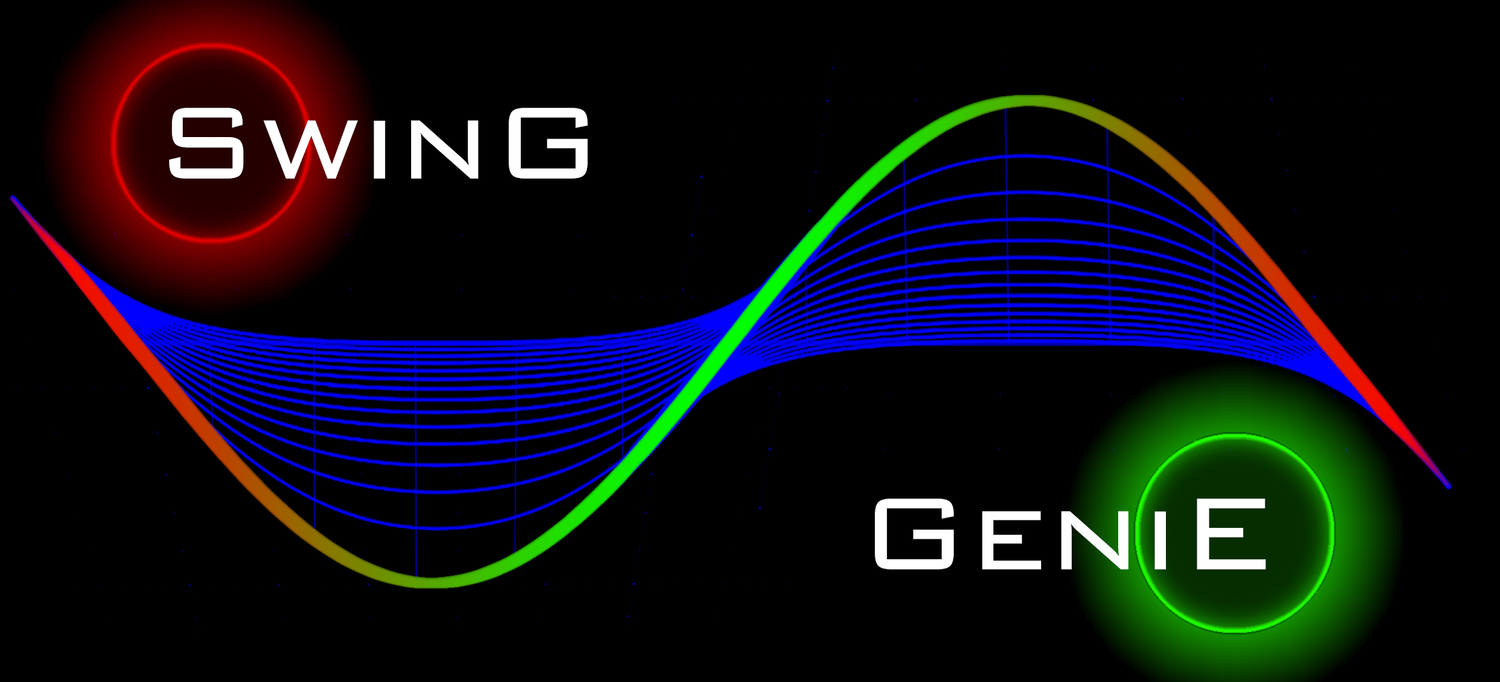The Master Moving Average Envelope incorporates 9 distinct, sophisticated moving average algorithms, with the output from these indicators distilled into a single adaptive and easy to interpret indicator. Each separate indicator is weighted and then displaced or knocked out by any contradictory indicators. Thus if all 9 moving averages within the MMAE are indicating an upward trend, then no indicators are indicating a negative trend. The MMAE provides the most advanced, reactive and insightful moving average indicator provided on any platform.
• • • SYNOPOSIS OF MASTER MOVING AVERAGE • • •
COMPLETE DESCRIPTION OF THE MASTER MOVING AVERAGE INDICATOR
Moving Averages have been a staple of technical traders for a lot longer than computers have been available to accomplish the calculations. Luckily we are able to easily produce very sophisticated, reactive moving averages using multiple algorithms designed by individuals with different backgrounds, talents and skill sets. The Master Moving Average Envelope calculates 9 distinct moving averages and then utilizes a knockout scoring system to produce a single combined score between -10 and +10. The example below superimposes the MMAE over a SDG stock chart with the MMAE background flags turned on. This was composed in Photoshop so you are able to see the strong relationship that is produced between the MMAE and the stocks price trend.
Below is a screenshot of all 9 moving averages utilized from within this indicator. Many of these Moving Average calculations are actually complex calculations that are utilizing multiple methods to calculate the single output for that particular average. As an example, moving average (D) utilizes a calculation referred to as ALMA and we are taking the Center of Gravity (This link is to John Ehlers's book "Rocket Science for Traders") of that calculation and outputting the combination of those two calculations as one moving average. The background of each one of these moving averages has been color coded to indicate what the signal being fed to the MMAE currently is. When we refer to a knockout scoring system it simply means that if one of these indicatos is positive and one is negative they cancel each other out. The majority of the survivors wins and that calculated total produces the MMAE dot's score and it's location on the MMAE indicator chart.
What could easily be construed as a convoluted and hard to interpret system is focused and very useful when displayed as the final indicator as seen below. The blue background highlight is a common feature of all of the SDG indicator's and it is flagging each occurrence of a spike in the equities volume. See the page on Turning Point Volume to learn more about this important volume flag.
The envelope referred to in the title of this indicator refers to the area produced by multiple moving averages of different lengths. When you have a short time frame and a long time frame the two lines will contain between them, the majority of the candles. The area between these two lines is the, "envelope" and it allows us to stay in a trade during a pre-determined amount of volatility. This keeps us in trades when the stock might be experiencing short term counter trend trading action. As these two lines converge as the stocks price changes direction the envelope become smaller and smaller until it dissapears briefly as the stock price changes direction. Moving average are not good indicators at this crossover point in time. That is why SDG utilizes multiple algorithms, utilizing the MMAE only when the stock price is not near support or resistance.
Two displays are available for coloring the dots. The one shown above requires that the moving averages be positive, above the zero line, in order to color the dots green indicating a positive trend. This helps guarantee that a positive trend has taken control of the price trajectory. This is designed as a long term, keep you in the trade moving average.
The one below changes from red to green or green to red immediately upon the dot's changing their up/down relationships. This produces a very short term reactionary Day / Swing trading moving average indicator.
The black dot on the left side of the image below is indicating a negative Aroon crossover. The white dot just to the right of center is indicating a positive Aroon crossover. The Aroon indicator is described more fully below.
Volatility can be a friend or an enemy of every trader. When you are in a trade and you believe that the trend will continue up, it can be un-nerving to see it trade in the opposite direction for a couple of days. These counter trend days are inevitable as individuals take profits or institutions re-position their portfolios. Moving averages are the specific tool designed to average out those days from the larger trend and provide you with a tool to help keep you in the trade in the face of these down days. Everyone will easily understand that the longer the timeframes utilized within each moving average the greater the latitude the stocks price has to fluctuate before changing that moving average's signal from positive to negative. Another simple way to state this is the longer your time frames the larger the envelop that is produced. Some of the moving averages utilized within the MMAE are dynamic or adaptive. This simply means they are determining the cycle length and utilizing that calculation to produce the timeframe or the number of bars that will be included in the calculation. Many of the others are set to 7 and 14 days.
The greatest disadvantage of moving average calculations is referred to as lag. If your moving average is using a 7 day time frame for the short period and a 14 day time frame for the long period, cross overs are produced only after enough days have reversed the current trend to sufficiently affect the short term average calculation. This produces a delay in changing the signal from positive to negative and thus a lag in the number of days that you might still be in a trade that has turned against you. In this example that could easily be 4 days or approximately 1/2 of the 7 day period. Many moving averages have been developed that bill themselves as zero lag and they do indeed reduce this effect to a very small component of what could be referred to as error. But each trading situation in a stock chart can be unique and the MMAE provided within the SDG package provides you with a tool that always allows you to make the most intelligent decision regarding the trend or impending changes. Since we are focused at trading opportunities occurring at support and resistance this area of indecision becomes even more problematic for moving averages.
SDG utilizes the output of the MMAE to color the core of each of the Genie's dots between support and resistance. At turning points, where this lag could delay our decisions on when to execute trades, we utilize the primary dot calculation or PDC. This is a very reactive calculation that utilizes a weighed center of gravity calculation to determine what the relationship between yesterdays candles body was to todays candle body. That calculation then determines the dot's core color only after a reversal at support or resistance has occurred. This calculation is then utilized for the next three days. You will always be aware of when the PDC has taken over from the MMAE because this is where the arrows are produced on your chart to confirm a turning point as you can see below.
The MMAE is utilized to determine the Genie's core dot color. You could in theory turn off the MMAE indicator and just rely on the PDC dots. I would suggest that you leave it on and watch it for a few weeks and see / learn how powerful this tool is at indicating the current trend. By seeing which direction the dots are going, up or down, MMAE give you a powerful tool in anticipating price action. Gaps between bars can also produce powerful signals.
AROON: << (Futures MagazineLink)
AROON (Investopedia Link) is a popular trend indicating tool that has garnered a lot of interest lately because one site is utilizing it as a marketing tool to draw paid subscribers to their service. They call this tool the "X marks the Spot Indicator," and an example of this is highlighted in the square gold box marked "D." We have enabled this indicator to be turned on within the Master Moving Average Envelope.
Plainly evident is the correlation between our Master Moving Average Envelope and the signals produced by the AROON indicator. Because the scale of the two indicators are "B" ~ 10 and "C" ~ 100, when the AROON indicator is turned on in the format pallet the Moving Average Envelope indicator become compressed into the lower 1/10 of the indicator's window. Simple trading guides are provided below but a search of articles on the web will provide a wide variety of different trading styles and approaches to utilizing the AROON indicator.
Aroon-Up: Above 70 indicates strong up trend.
Aroon-Down: Above 70 indicates strong down trend.
Aroon-Up: Below 50 indicates Up-Trend is weakening.
Aroon-Down: Below 50 indicates Down-Trend is weakening.
Aroonn-Up and Aroon-Down moving lower in parallel indicates consolidation.
Aaron Crossover X Indicator can be turned on or off in the Format panel of the Master Moving Average Envelope Indicator. Even when this indicator is turned off it will still display a black or white dot indicating a negative or positive crossover on you Master Moving Average Envelope indicator.
















